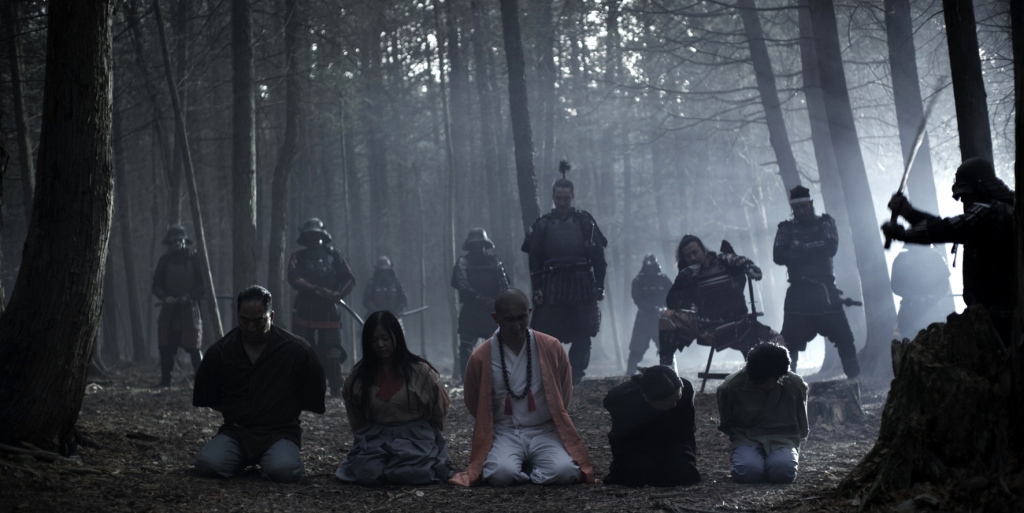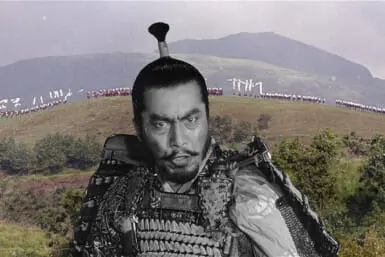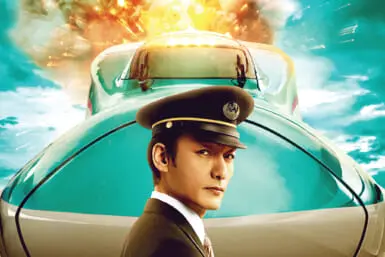On February 24, Netflix released their new documentary show Age of Samurai: Battle for Japan to widespread “Oh heck yeah!” The series, which features reenactments of 16th-century events that ultimately led to the country’s unification, quickly grabbed viewers’ attention with their depiction of the warlord Oda Nobunaga. Seemingly ripped straight from Game of Thrones, the show portrayed Nobunaga as a brilliant but bloodthirsty warrior who killed family members, massacred temples, and executed scores of innocent people to earn his very real nickname of “Demon King.”
And, OK, he technically did do all of that but reducing Nobunaga to a remorseless killer is like saying that John Lennon was “Yoko Ono’s third husband.” It’s true but it’s not exactly the whole story. Here’s everything that Age of Samurai didn’t tell you about Oda Nobunaga:
Young Nobunaga Was (Unintentionally) Hilarious
According to the show, before he was the “Demon King,” Nobunaga was better known as “the fool of Owari” (the name of his domain) because of the strange behavior at his father’s funeral when he threw incense at the altar. But he actually earned that nickname, alongside the much more straightforward “the big idiot,” way before that. That’s because, for most of his early life, Nobunaga didn’t care what anybody thought of him, and his attire always reflected that.
He reportedly liked to wear a yukata summer kimono with the sleeves cut-off, multi-colored half-pants made from tiger and leopard skin, pouches all around the waist for things like flint (basically his equivalent of a lighter), and a straw rope instead of a belt. He also reportedly tied his hair up like a “tea whisk,” and liked to walk around looking for trouble. His contemporaries write that while passing through towns, this son of a respected feudal lord would snack messily on nuts, melon, or rice cakes etc., probably just praying for someone to say something to him about it so he could start a fight with them.
No one ever did because they would either kick the ass of a guy with a powerful dad or get their ass kicked by a guy who looked like a mix of a high school delinquent from an ‘80s anime and a homeless clown. There’s just no winning in that situation.
View this post on Instagram
Oda Nobunaga: Amateur Monster Hunter
So, at one point, Oda Nobunaga tried to knife the Japanese Loch Ness monster to death.
The story takes place in the 1550s when Nobunaga was still fighting for control over Owari but wasn’t too busy to sit down and hear the story of a man who claimed to have seen a massive monster serpent living in a pond not far from him. The man, Matazaemon, said that while walking along Amagaike pond near Hira Castle, he spotted a monstrous serpent on its banks. Black, thicker than a large tree, with a head resembling that of a deer and eyes that shined as bright as stars, it nearly scared the man to death. So, naturally, before Matazaemon even finished talking, Nobunaga was already looking around his room, wondering where he will mount the head of this Japanese Nessie that he was definitely going to kill.
First, he gathered nearly every farmer from five surrounding villages and hamlets and ordered them to bring as many buckets as they can find. Then they got to draining the pond to find the monster. After four hours, though, they made little progress so Nobunaga put a dagger between his teeth and dived into Amagaike to find the serpent himself. Sadly, after numerous dives that found nothing, he gave up and decided to return home. Good for him, too, because it turned out that the lord of the nearby Hira Castle was planning to murder Nobunaga if he decided to stop by for a visit. It’s like they say: unlucky in monster snake-hunts, lucky in dodged assassinations.
He Was a Huge Patron and Fan of the Arts
Watching Age of Samurai, you might get the impression that Oda Nobunaga’s favorite pastime was sitting alone in a dark room and sharpening his sword while imagining all the different people and body parts he’s going to shove it into. In real life, though, his hobby (besides monster hunting) was collecting antiques. Specifically, anything related to the tea ceremony.
Introduced by Rikyu (千利休), tea master to Oda Nobunaga (織田信長) and Toyotomi Hideyoshi (豊臣秀吉), Japanese tea ceremony (茶の湯) is now a staple of Japanese tradition and showcases a careful art carried through the years. Get your own utensils and matcha at Japan Centre. pic.twitter.com/XamRmB8a6R
— Japan Centre (@JapanCentre) December 11, 2018
Oda Nobunaga loved the Japanese tea ceremony. His tea master, Sen no Rikyu, is considered the creator of what we now know as chanoyu, and although the art flourished more under Toyotomi Hideyoshi, it all started with Nobunaga. He was such a huge fan of chanoyu that whenever he got word of historic tea ceremony implements being housed at this or that temple or home, he would write their owners and tell them that he wanted their treasures. And no one dared to refuse the Demon King. To be clear, he always paid for the antiques but never bothered asking if they were for sale in the first place.
What else? He enjoyed sumo, organizing many exhibitions and tournaments during his life. He ordered the construction of opulent palaces and beautiful Japanese gardens, advancing each of those crafts along the way. He helped popularize the art of painted screens, and he loved Noh theater and dances. In 1556, he actually organized a performance during which he himself took the stage, playing a small drum and doing “a woman’s dance.” Basically, picture everything you now associate with “high Japanese culture” like sumo, beautiful gardens, the tea ceremony, the grand, colorful paintings etc. Nobunaga helped promote that, creating a brand-new cultural period called Azuchi–Momoyama which brought Japan into the early modern age and whose influences we feel every single day.

Courtesy of Cream Productions
People are complicated. Nobunaga earned his “Demon King” nickname but he also did a lot for Japanese art and culture. Oh, and, also, he’s the reason why there was a black samurai. Oda Nobunaga was the one who took Yasuke—the black servant accompanying a Jesuit mission to Japan—into his service, making him the first and only black samurai in history. So let’s definitely not forget that this warlord has a lot of blood on his hands, but let’s also remember all the good that he did. And that he tried to stab a monster serpent to death. That’s just an awesome story. Why did Age of Samurai leave that one out?
Read more about the Netflix show in ‘Age of Samurai: Battle for Japan’ Sets the Story Straight For The Japanese Warriors of the Past.









